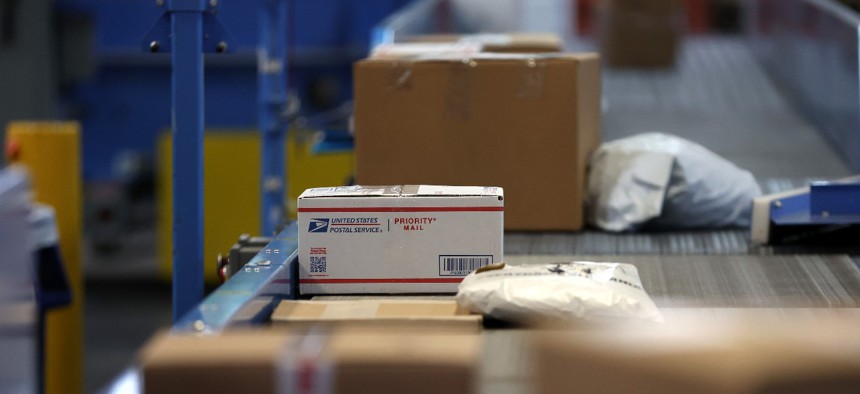USPS Is Losing a Lot More Money in 2023 Than It Expected
The Postal Service has gotten rising costs under control, but mail volume losses are accelerating.
The U.S. Postal Service has already lost $2.1 billion in fiscal 2023, according to new figures released by the agency, exceeding its expected losses for this point by 75%.
USPS has blamed inflationary pressures for throwing it off course, though its operating expenses have grown by less than 1% through the first five months of the fiscal year. In February, the Postal Service managed to cut its costs by more than 7%. All told, USPS’ losses in fiscal 2023 have exceeded the same period in fiscal 2022 by 10%. It had projected it would lose just $1.2 billion.
The mailing agency has suffered significant volume losses so far this fiscal year, leading to an overall dip in revenue. USPS’ income dropped with particular force in February, despite significant price increases that went into effect Jan. 22. Volume fell by 11% in the month, leading to a revenue decrease of 6%. For the year, volume is down by about 7% and revenue has dropped by about 1%.
USPS has seen slight revenue growth in both First-Class mail and packages for the year, as higher rates have offset declining use. But significant losses in marketing mail and other categories have offset those gains.
In Postmaster General Louis DeJoy’s 10-year business plan, he had originally projected that fiscal 2023 would mark the first year in nearly two decades that USPS would break even. He conceded in November that goal was no longer possible and predicted his agency would instead lose $4 billion on the year. DeJoy has said his full suite of reforms for the Postal Service, including sweeping changes to its delivery network that the agency is beginning to implement this year, will allow it to finally get out of the red.
Steve Kearney, executive director of the Alliance of Nonprofit Mailers, blamed the precipitous volume declines—which continue trends that have been mostly ongoing for years—on the higher prices for customers.
“It appears that USPS is systematically eliminating mail volume and revenue as a result of massive rate hikes,” Kearney said.
DeJoy vowed as part of his 10-year business plan to use his authority to raise rates above inflation "judiciously," but predicted USPS would generate between $35 billion and $52 billion by 2031 by raising prices. He has acknowledged that would drive some mail out of the system, but said he was only slightly speeding up the timeline for an inevitable drop off. USPS will announce in the coming weeks whether it will once again institute a semiannual July price hike, though DeJoy has already hinted they will continue indefinitely. Last July, USPS announced it would raise rates for regular, First-Class mail by 6.5% and increase them by 8.5% for package services.
Dave Partenheimer, a USPS spokesman, said the agency will not comment on its financial situation until its next quarterly update in May. The monthly update is required by the Postal Regulatory Commission, but does not go through the full auditing process as does its quarterly posting.
USPS lost $1 billion in the first quarter of fiscal 2023—the Oct. 1 through Dec. 31 period is typically its most profitable of the year—though it grew its operating revenue by more than $200 million. President Biden last year signed into law the 2022 Postal Service Reform Act, which is expected to save a combined $107 billion for USPS by eliminating existing debt and taking future liabilities off of its books. Setting aside that savings, the Postal Service saw a net loss of nearly $500 million in fiscal 2022.








